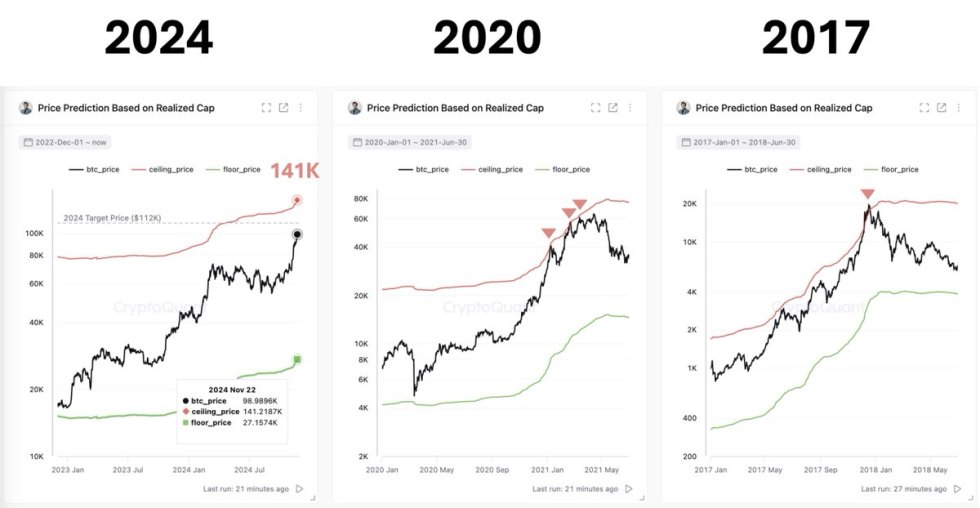With the previous articles, we found the disconnect between paid-for work and paid-for time. We also understood that if you want to get paid you have to provide work that is valuable for others. So when the person consumes the benefit of your work, the exchange happens value for value - work for sats. But what happens if the benefit that the consumer experiences is not a momentary but a continuous process? There are a few examples of this. I will start with the one that is not that captivating but still valuable.
Streaming services, like other industries, grapple with the limitations of the fiat payment system. The burden of fees and the absence of suitable technology for streaming payments have compelled them to adopt similar mitigations as other industries. This translates to charging users on a monthly basis.
With the Lightning Network, we have the technology to stream sats for content. No longer confined to monthly subscriptions, you pay for what you consume in real time. Whether you watch sporadically or binge extensively, streaming payments allow for a more personalized and efficient payment model. This way the creator of the content and the user have a direct connection for each minute the content is broadcasted. With streaming payments now you can say goodbye to subscription payments.
Unveiling A New Era Of Fair Compensation And Accountability In Movie Production
Imagine you've created a movie or documentary. Traditionally, you'd charge people for a ticket, essentially asking them to pay upfront for future value, creating a slight disconnect. Now, with streaming payments using sats, consumers can pay as they watch. If your movie sucks, they might only pay for the first 30 minutes. However, you still receive value, and viewers won't feel overcharged for something they didn't enjoy. If your movie is great they not only stream sats the whole time but at the end, they leave a tip.
On the receiving side of the movie most people involved in it received a salary for doing their job. As we already know this is not aligning the whole structure in the same direction. Some people do not care at all how good the movie is if they have already been paid and do not receive a bonus further. Some people might care about reputation in the market but very few just want to do the best job. Again, we went through this, and as you are guessing you just do a split payment in the backend where all the people in the credits actually receive sats or even milisatoshis based on their contribution. This was something I did not expect that Bitcoin would disrupt. This way the reputation is directly linked to the payment and a lot more people will fight to have the best movie. You can be someone who contributed to a project and wants to stay anonymous for whatever reason but still receive money - Lightning instant settlement is the way to do it.
These concepts should not be new if you read through the last 3 articles. In addition, people in the Bitcoin space are familiar with the Value for Value (V4V) podcasting and that is very close to what I am describing above. While the technology for podcasting is already in place, it's surprising how few podcasts leverage this technology to implement split payments effectively. They give that responsibility to some hosting service that decides to take a 5% split for themselves and the other 95% goes to the wallet of the show. Why not do the split the proper way? The hosting service provides value so they should get a percentage but if you are 3 people involved in the production of the podcast you should have that 95% split so it goes to those individuals. There's no excuse, especially for Bitcoin podcasts, not to make this effort and implement split payments appropriately.
The Dynamic Future Of Pay-as-you-go In Content Consumption
In this example, the pay-as-you-go model holds true for continuous experiences, like streaming. Now, let's revisit the movie example. If you're a theater, you are essentially the hosting provider for the movie. The quality of the theater experience can vary; one theater might have uncomfortable chairs, while another boasts luxurious massage chairs. The theater with subpar seating might receive a 3% share of the movie's streaming sats revenue, while the one with comfortable massage chairs might earn 5% for each sat stream paying for the movie. Furthermore, if a viewer activates the massage function of the chair, additional sats are streamed for each second that the function is on. I do not know the exact payment dynamics between theaters and movie studios but I bet there are prepayments and funds held at multiple points in the fiat payment process. With the adoption of the Lightning Network, theaters no longer have to prepay for movies to be projected on their screens. They can now observe which movies are most popular in real time and adjust their projections accordingly to optimize revenues. This benefits the consumer and optimizes profits for themselves and the creators of the movie.
Now you see the content gets its value stream for the continuous experience and everyone in the film industry will fight to give the best experience for the most amount of time. The better the experience the more sats flow their way. Due to the highly subjective nature of content, where one person might deem a movie subpar, another might label it as their favorite. This subjectivity is why I believe most content streaming will not have a predetermined price. Even movies may adopt the V4V model, similar to what Adam Curry is pioneering in podcasting. For instance, you watch a movie, and during the credits, a prominent QR code appears, allowing you to decide how much you want to send to the creators of the movie. You will listen to a song or a podcast the same way. Whether you predefine a streaming rate per minute or request payment at the end, both options are technically possible. However, the market will ultimately determine which option prevails as the better one.
Also, why not have a bidding competition for any event that has assigned seats? The person who bids the most for a ticket gets to be in the first row of the concert or a sports stadium. This way the subjectivity is left for all the viewers to decide how valuable it really is. This way it ensures a full stadium also because if there is no value in attending the event people are not going to bid for the seats or just pay 1 sat for it.
Revolutionizing Taxi Transactions For Drivers And Passengers Alike
The continuous experience or service for streaming could be anything in the physical realm. I will take a look at how instant settlement could look like in transportation services. One such transportation service is the taxi service. Even though Uber decentralized the taxi companies which is great they did nothing about decentralizing the payment process. Lightning Network fixes that and more.
With a streaming payment option for each meter of movement, taxi drivers no longer need to wait until the end destination to receive their payment. In a world of instant settlement, payment occurs as you go, eliminating the risk for the taxi driver regarding whether the passenger will pay at the end of the journey. While this might not be a groundbreaking improvement, there are several additional benefits to consider.
Why do most taxis operate with cash? Taxi drivers in most places need a POS device for the customers to be able to pay for a better user experience (UX). It may be a better UX but on the other hand, it creates problems for the drivers either way:
- They have to acquire clunky devices.
- They must pay payment processing fees, negatively impacting their margins.
- Operating solely with cash exposes them to the honeypot problem, carrying a substantial amount of money, and making them vulnerable to theft.
With an app tailored for the taxi experience and integrated with the Lightning Network, these issues become irrelevant. There is no need for additional equipment, no payment processing fees for receiving money, and no exposure to visible cash, reducing the risk of being a target for theft. Now you can have a better UX with better security and better margins - an additional benefit is that it will be paid with Bitcoin. Not only that but just like the example with the movie theater chairs drivers will be incentivized to make the travel experience even better. They can offer - to watch a movie, video games like PlayStation, or massage chair. If you choose to use those extra experiences on top of the travel experience you have to increase the sats streaming their way.
An additional benefit for the travel experience of customers arises when multiple passengers in a taxi have different destinations. Traditionally, the taxi meter ticks for the entire journey, and when the first person is dropped off, determining a fair amount for their portion becomes complex. However, with the Lightning Network, it's conceivable to streamline this process. Imagine a scenario where three passengers enter a taxi, each with distinct destinations. Each person scans a QR code upon entering, linking their streaming sats to the taxi app. The app manages split-receiving, dynamically adjusting the distribution of streaming payments based on how many people are in the taxi. As passengers are dropped off one by one, the app seamlessly adjusts the split-receiving, providing a fair and efficient payment solution for each individual's share of the journey.
Optimizing City Transportation With Streaming Sats
The proposed model of split-receiving through QR codes and streaming sats can extend beyond taxi services to other modes of transportation, such as buses. The idea is to calculate the average cost per mile (or meter/foot) for providing the transportation service, including factors like fuel, maintenance, and driver salary, and add a margin for profit. Passengers entering the vehicle scan a QR code, and the app dynamically adjusts the streaming payments based on the number of people on board.
For buses, this model allows for real-time adjustment of streaming payments as passengers enter and exit. If there are 30 people on the bus the split is between them. At the next stop, 10 people are dropped off and 5 people get on board - now the sats stream is divided by 25 people. As the number of people on the bus changes at each stop, the streaming sats are proportionally divided among the passengers. This approach can lead to more efficient and flexible city transportation. Late-night buses will be more expensive for the passengers because of the fewer riders, while buses during peak hours may offer a more cost-effective traveling experience as payments are shared among more passengers.
This system encourages transportation optimization around events, such as concerts or sports games, where private buses or minivans wait to fill up before departing. Routes can be dynamically adjusted because you will have a system tracking how many people are in the vehicles at what time and at what location on the map. Importantly, this data remains anonymous, as no KYC information is required for the Lightning Network payments.
The Streamlined Pay-from-a-distance
Now with this streaming money feature, it can be applied differently. Let’s go back to the taxi service for a moment. The pay-from-a-distance feature that is available in the Lightning Network can significantly enhance the experience of ordering a taxi. Instead of the traditional model where drivers wait patiently and charge fixed fees when passengers enter the car, this model introduces streaming sats from the moment the passenger accepts the ride. Here's how it works:
- The passenger places an order in the app, specifying the destination. Nothing new here.
- Drivers see the order and can apply for it, similar to platforms like Uber.
- Streaming sats start the moment the passenger accepts the driver, and streaming payments commence. This fee will be less than the actual transportation but the user is still paying for the service of the car coming to him and not the other way around.
- The taxi arrives at the passenger's door, and the streaming payments continue. There is a fee for waiting at the door per minute.
By shifting the waiting cost to the passenger, there's a strong incentive for both parties to be prompt, and the system becomes more efficient. Additionally, the passenger's responsibility to follow the car reduces operational costs related to alerting passengers via message or a call. Any inefficient time management becomes a cost for the passenger. This model aligns incentives for both drivers and passengers, creating a more seamless cost and time-effective taxi experience.
The concept of paying from a distance can be creatively applied to various scenarios, providing convenience and peace of mind. For instance, when it comes to sending your child somewhere with a taxi, traditional concerns about trusting them with money or the driver's reliability may arise. However, with the ability to stream sats for the ride, you gain real-time visibility on your device, tracking your child's journey and ensuring they reach the intended destination safely. This pay-from-a-distance feature extends beyond transportation and can be applied to other continuous services. For example, daycare services charge per minute, allowing you to stream payments in real-time, ensuring accurate and fair compensation for the duration your child spends there. Additionally, you can send a present to a friend, such as a massage session, and pay for it in a streaming fashion, covering the cost continuously based on the duration of the service. The flexibility of streaming payments not only offers real-time tracking and control but also opens up new possibilities for various services where charging per minute or duration is relevant. Those services can be paid on the spot or from a distance.

I know that now it looks like we are going backwards from the original point of never paying money for time. The key distinction here is that you may be paying for time past for the service but in that time you get a continuous stream of value (work done) so you are streaming value back to pay for it. In some cases the time spent is actually an accurate measure of the work done.
It's true that developing apps with such functionalities is technically feasible, and there might be entrepreneurs and developers willing to explore these possibilities. However, a significant challenge arises when considering custodial control over users' funds. Small startups might find it financially burdensome and complex to operate as custodians, potentially steering away from such responsibilities. This will take not only high responsibility but also a very big financial wall and expertise to obtain the licenses that comply with the ever-changing regulations. On the other hand, large tech companies with substantial resources could afford to take on the role of custodians, presenting both a business opportunity for them and a risk for the users. The move by some tech giants, like X(formerly Twitter), to obtain such licenses can be seen as a strategic measure for self-preservation over their own finances. This is also an opportunity to consolidate control over not only user data but user finances within their platforms.
The Breez SDK offers a powerful solution, empowering developers to create diverse applications without having to worry about payment intricacies. Its non-custodial nature is a key advantage, eliminating the need for licenses. The infrastructure of it is made in such a way that it is peer-to-peer so no one is holding money for someone else. The app developers focus on the experience within the app and just plug in the code. This combination of features gives startups a competitive edge and reverses the advantage held by large tech companies. While they go through the complex process of getting a license the startup can integrate the global payment network (the Lightning Network) in one day. Even if certain tech giants choose to lock users' funds within their applications, alternative options will continue to be developed, and users will have the freedom to opt-out. Just like people are choosing Bitcoin over fiat.
Now who is ready to give all of us those experiences in their app?
This is a guest post by Ivan Makedonski. Opinions expressed are entirely their own and do not necessarily reflect those of BTC Inc or Bitcoin Magazine.

You can get bonuses upto $100 FREE BONUS when you:
💰 Install these recommended apps:
💲 SocialGood - 100% Crypto Back on Everyday Shopping
💲 xPortal - The DeFi For The Next Billion
💲 CryptoTab Browser - Lightweight, fast, and ready to mine!
💰 Register on these recommended exchanges:
🟡 Binance🟡 Bitfinex🟡 Bitmart🟡 Bittrex🟡 Bitget
🟡 CoinEx🟡 Crypto.com🟡 Gate.io🟡 Huobi🟡 Kucoin.




















Comments